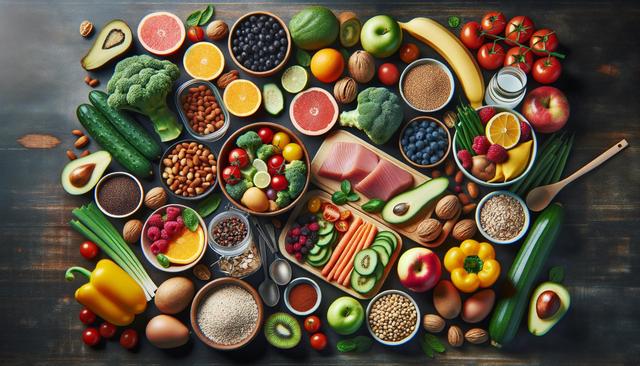Healthy Meal Prep on a Budget: Simple and Nutritious Ideas
Healthy meal prep doesn’t have to be expensive. With simple ingredients and smart planning, you can prepare nutritious meals on a budget. These budget-friendly healthy meal prep ideas are perfect for busy individuals looking to stay on track with their nutrition.

Start with Budget-Friendly Staples
One of the easiest ways to keep your meal prep affordable is to base your meals around low-cost pantry staples. Items like rice, oats, lentils, canned beans, and whole wheat pasta are not only inexpensive but also nutrient-dense and versatile. Buying in bulk can further reduce your grocery bill, especially for items with a long shelf life. Consider rotating these staples throughout the week to keep your meals interesting without overspending.
Some affordable staples to include in your grocery list are:
- Brown rice or quinoa
- Dried lentils or split peas
- Rolled oats for breakfast or baking
- Canned chickpeas or black beans
- Whole grain pasta or couscous
These ingredients provide a solid foundation for countless healthy recipes, from hearty stews to grain bowls and salads. Combine them with seasonal vegetables and your choice of protein for well-balanced meals that don’t break the bank.
Choose Affordable Protein Sources
Protein is a vital nutrient that supports muscle repair and overall health, but it doesn’t have to be expensive. There are many cost-effective options available that can be used in various recipes. Eggs, canned tuna, tofu, and legumes are excellent sources of protein that are both budget-friendly and easy to store.
Here are a few protein-rich ingredients that deliver great value:
- Eggs – versatile for breakfast, lunch, or dinner
- Canned fish – ideal for salads, sandwiches, or pasta dishes
- Tofu or tempeh – great for stir-fries and curries
- Peanut butter – adds flavor and protein to snacks and smoothies
- Greek-style yogurt – useful for breakfasts or as a base for sauces
Planning meals around these options helps reduce meat consumption, which can be one of the costlier parts of a grocery list. Combining plant-based proteins like beans and rice together also creates a complete amino acid profile, making the meal both nutritious and satisfying.
Plan Your Meals and Shop Smart
Effective meal prep starts with a good plan. By setting aside time each week to plan your meals and create a shopping list, you can avoid impulse purchases and reduce food waste. Focus on recipes that use overlapping ingredients so you get the most out of what you buy. For example, if you buy a head of broccoli, plan to use it in both a stir-fry and a roasted veggie bowl.
To make your shopping more efficient and budget-conscious:
- Stick to your grocery list to avoid overspending
- Buy seasonal produce for lower prices and better flavor
- Use store brands, which are often less expensive and similar in quality
- Check for sales, coupons, and discounts before shopping
Batch cooking is another smart strategy. Preparing larger portions of meals like soups, casseroles, or grain bowls can save both time and money. These meals can be stored in the fridge or freezer and used throughout the week, helping you stay consistent and avoid turning to takeout.
Prep Simple, Balanced Meals
Simplicity is key when it comes to healthy meal prep. Balanced plates typically consist of a source of protein, complex carbohydrates, and plenty of vegetables. Meals don’t need to be complicated to be nutritious. A basic stir-fry, roasted vegetable tray, or grain bowl can go a long way when prepared with care and flavor in mind.
Here are a few simple meal prep ideas you can try:
- Quinoa salad with black beans, corn, and bell peppers
- Roasted chicken thighs with sweet potatoes and green beans
- Vegetable stir-fry with tofu and brown rice
- Oatmeal jars with chia seeds, fruit, and nuts for breakfast
- Lentil soup with carrots, celery, and tomatoes
Using herbs, spices, and homemade sauces can add flavor without the need for costly ingredients. Mix and match meals throughout the week to keep things interesting and prevent food fatigue.
Store and Reuse Leftovers Wisely
Proper food storage plays a vital role in making your meal prep efforts last longer and stay fresh. Invest in reusable containers that are microwave and freezer safe so you can portion out meals and store them conveniently. Labeling containers with dates helps you track freshness and avoid spoilage.
Leftovers don’t have to be boring. Get creative by repurposing them in new ways:
- Use leftover roasted vegetables in wraps or omelets
- Add cooked grains to soups or salads
- Transform stir-fry into a rice bowl or burrito filling
- Blend extra cooked veggies into a savory pasta sauce
By reusing ingredients and meals creatively, you reduce waste and stretch your budget further. This approach also saves time during the week and keeps your meals varied and enjoyable.
Conclusion: Eating Healthy Without Overspending
Healthy eating doesn’t have to come with a high price tag. With a little planning, smart shopping, and strategic use of ingredients, it’s entirely possible to enjoy delicious, nutritious meals on a budget. Whether you’re a student, a busy professional, or just someone looking to eat better without overspending, meal prepping with cost-effective ingredients can support both your health and your wallet. Start small, stay consistent, and explore new recipes that align with your goals and budget.